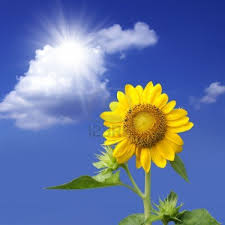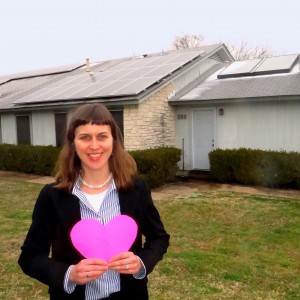 Happy Kansas Day! Kansas (a.k.a. the “sunflower state”) became the 34th state of the Union on January 29, 1861. As I celebrate the birthday of my beloved, native state, I’ve chosen to examine how Kansas is fairing on something also important and dear to me, solar energy.
Happy Kansas Day! Kansas (a.k.a. the “sunflower state”) became the 34th state of the Union on January 29, 1861. As I celebrate the birthday of my beloved, native state, I’ve chosen to examine how Kansas is fairing on something also important and dear to me, solar energy.
Current State of Affairs
As Kansas was born in a time of struggle on the eve of civil war, the state’s solar industry is struggling yet steadily gaining ground. An American Council on Renewable Energy report clearly show solar photovoltaic (PV) installed capacity lagging far behind wind, biomass and hydro in the state at the end of 2012. There were only 0.5 MW of solar PV compared to over 2,700 MW of wind electric generating capacity. However, from 2010 to 2012 the growth, or change in installed PV capacity was more than +100% each year according to solar market trend data. This rapid growth is fueled by the fairly typical suite of renewable energy incentives. For solar and other renewable energy systems, Kansas offers net metering and property tax exemptions plus the state’s renewable portfolio standard (RPS) mandates 20% of generation capacity be renewable energy by 2020.
Potential for Growth
Kansas has plenty of potential. When compared to Germany, the “Top Solar Power Country” in the world, this potential is very evident. Germany has only 40% more land area than Kansas. Germany has about 300,000 watts/person of solar PV capacity, while Kansas has less than 0.2 watts/person! However, Kansas can get more out of solar energy systems because of its location closer to the equator than Germany. And, after all the state song, “Home on the Range” does declare “. . . the skies are not cloudy all day.”
The frequent winds keep the skies clear for solar, but utility scale wind energy growth may be hindered by lack of transmission lines. However, the growth potential for distributed renewables like rooftop solar looks good. The state has set limits on renewable energy installations connected to individually-owned utilities, but they leave plenty of possible room for expansion. Residential installations can be as large as 25 kW and non-residential can have up to 200 kW. Overall renewable systems capacity must not exceed 1% of peak demand though. Additionally installers are pretty widely available. According to the Kansas Energy Information Network there are currently around 25 dealers/installers of solar energy in the state. Not bad for a state with less than 3 million people.
Though it looks like it could be a long road to Kansas really utilizing its solar resources, I’d like to think Kansans are up to the task. The state motto, “ad astra per aspera,” I’ve always heard translated as “to the stars through difficulties.” Statehood was a challenge, spreading solar is also, but both are worth the effort.


 Now that the holiday frenzy is over and there’s time to breathe again, come on over for a virtual tour of my house.
Now that the holiday frenzy is over and there’s time to breathe again, come on over for a virtual tour of my house. Over the holidays, I visited my family in Kansas. While there, I noticed that the origins of my life’s work in resource conservation lies in my family. My grandparents grew up in the Great Depression, which was also a time of severe drought in the Midwest. My parents were often on a tight budget in the 1970s/’80s and experienced the effects of oil embargo. Through their lives and stories, they taught me my earliest lessons in the wise use of our planet’s resources.
Over the holidays, I visited my family in Kansas. While there, I noticed that the origins of my life’s work in resource conservation lies in my family. My grandparents grew up in the Great Depression, which was also a time of severe drought in the Midwest. My parents were often on a tight budget in the 1970s/’80s and experienced the effects of oil embargo. Through their lives and stories, they taught me my earliest lessons in the wise use of our planet’s resources.
Recent Comments